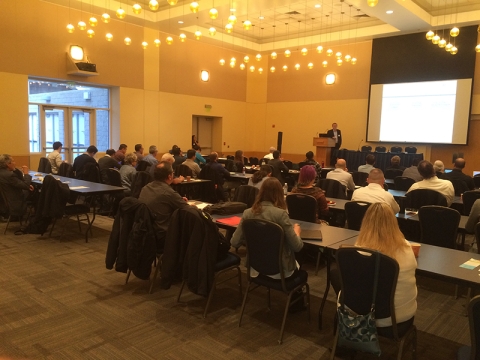
Last week, representatives from many of the state’s utilities, California Energy Commission, Public Utilities Commission, industry, and academia met to discuss the current state and future of data centers. The all-day meeting—Crunching Numbers, Shrinking Megawatts: Energy Efficiency of Data Centers—was part of a series of quarterly efficiency and demand response public workshops hosted by the ETCC and focused on large-scale enterprise data centers, as well as smaller server closets found in almost any office. Conversation was varied and included many emerging or underutilized solutions for making these operations more energy efficient. Some highlights of the discussion included:
- 10-30 percent of servers in a large server farm are literally powered on but doing nothing. Finding and eliminating these “zombie servers” is among the largest and most cost-effective steps that any data center can take to cut energy use and peak demand.
- Utilities may want to consider working with operators of server closets or small data rooms to migrate those operations to the cloud. One presenter said there is an “order of magnitude” energy consumption difference between hosting these operations in an office closet versus an enterprise data center, plus the cloud offers greater security.
- Temperature has long been a focus of data centers: the hotter a data center can operate, the less energy is expended on cooling the facility. Large data center operators said they are now running servers as high as 95F and are increasingly using outside air (economizing) to provide cooling when local temperatures are low enough, rather than operating energy-intensive chillers.
- Cooling data centers with water or other liquids continues to be of great interest in the sector because liquids are far more efficient than air at whisking away waste heat. However, methods vary from using a closed water loop and heat exchanger to water side economizers to locating a sealed data center on the ocean floor—no kidding!
- As in many other sectors, advanced controls and artificial intelligence are being increasingly utilized to optimize operations and make smart, automated operational decisions that can lead to significant savings.
- Because data centers are a leading purchaser of intermittent renewable resources, they are a valuable partner for utilities in developing the highly-responsive grid of the future and data centers are also emerging as an early market for on-site battery storage.
The meeting attracted a total of 52 in-person and 14 virtual registrants who participated in four interactive panel sessions, networking, and great conversation. Full presentations from the day can be viewed here. A huge thank you to ETCC member utility SMUD for organizing and hosting the event last week!
The next quarterly meeting will cover commercial customer energy issues and will be February 8, 2017 from 9-3:30 PST at the SCE Energy Education Center in Irwindale, CA. Registration will open in the coming weeks.
Other upcoming meetings include the 2017 Q3 meeting on industrial topics, hosted by PG&E on September 20 in the Bay Area and the 2017 Q4 meeting on residential topics, hosted by SDG&E on December 6 in San Diego. All ETCC quarterly meetings are free and open to the public.
There will be no Q2 meeting in 2017 because the ETCC will be hosting the Emerging Technologies Summit in Ontario, California.
